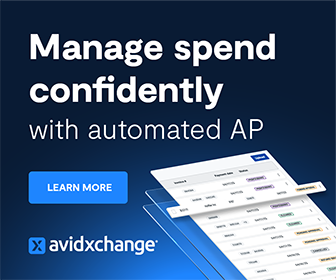Controllers Council recently held a roundtable panel discussion entitled, A CFO’s Guide to Effective Cash Flow Management, presented by BILL.
Panelists included Genevieve Hancock, CFO at Germfree; Ted Weitzel, SVP Finance & Operations at Logik.io; and Eric Greene, Controller at Aptive.
Following are key takeaways to this discussion. If you are interested in learning more, view the full roundtable panel video archive video here.
How frequently does your organization forecast cash flow?
Ted: Monthly is the way to go at the very minimum. You’ve got to have an eye on cash flow. We do a three-year rolling forecast, which is a little bit more than 13 months. But the idea is always to get ahead of things before they go sideways.
Gevevieve: We do two forecasts, unfortunately, and then we also run it out with our budget. So, we do a five-year strap plan for our strategic budget each year, and then quarterly LEs for our latest estimate on the FP &A side. Now, something that I found probably a couple of years ago that wasn’t covered off in budgeting process was really ensuring that you understood your cash conversion cycle and your working capital. That’s one of the things that I like to look at both from what you’re looking at, the high level on the budget, but also does that mesh with your cashflow from a detailed level? Because you’ve got that indirect version with the networking capital, but then you’ve also got your 13-week rolling forecast, which we generally expand out for a year, if possible.
Eric: Our organization really believes in scenario planning. We do a regular rolling three-week forecast, which we update on a weekly roll forward cadence for updating to the current events. Our industry is very seasonality based. We obviously keep a closer eye and run some scenario planning around higher cash flow times when cash flow is a little bit tighter. But we’ve expanded that now to a yearly kind of roll forward on looking at long-term cash forecasting because it’s important for looking at opportunities that the company may have. And if you’re not tight on your cash flow forecasting, you can’t sometimes take advantage of opportunities that might arise in the market. And a company is cognizant of that. And we want to be able to kind of understand kind of how things are coming down the road and what that means for cash flow if we were to take advantage of certain opportunities that may arise in the market.
How does managing cash flow rank in your F&A priorities and why?
Ted: It’s a very high priority for us because, you know, as a growing software company, we are often in a burn position. What we’re really managing to is when do we need to raise our next ground? And how do we make sure that the growth supports that investment? And, where do we want to go? Who do we want to exit to? And, if things go sideways, can we pull back and get to cash flow break even? Before the stuff hits the fan. So, it’s a very high priority, very important for us and the team. It has a little bit of risk because we are often in a burn position to support the growth.
Gevevieve: I would say that from a cashflow rank, it is probably the second highest in the finance priority list. Capital structure and the funding is the first currently. Now, there’s always fire drills and things that come up that you kind of have to work around. But related to cash flow specifically, one of the things that I find frequently is making sure that your fixed costs are fitting into your recurring revenue. So, our business model, we have a couple of different revenue streams. We’re very milestone based. The working capital is really at the discretion of the contract. It can be very lumpy on especially larger projects. Now, when you have those working capital needs to kind of smooth things out, there are things you can do on the contract side, but there are also things you can do on the recurring revenue side. So, service agreements, we have rental agreements for some of our manufactured products. We have a lease fleet, those types of things that really keep that core operations and core fixed costs running. We try to maintain our cash flow based on that to make sure that it’s not extending out. The other thing that I’ve found on the ranking is making sure when you’re going into those details on a weekly basis that you are taking your costs for the week before you’re taking your receipts for the week.
Eric: We consider cashflow to be a top priority, whether it’s an outspoken top priority or a silent top priority. Often things in business you take for granted until there’s an issue. And when there’s an issue, then the alarms go off and people are concerned. And cashflow is one of those things. Cash is the lifeblood of the business, cash is king. You can make a lot of mistakes in accounting and finance, but if you’re out of whack with your cashflow planning and management, if you run out, it’s game over.
I also believe that cash flow, you know, when it comes to importance, it impacts every other financial function in the business. And so if you don’t have a strong cash flow function, you’re going to find that your budgeting, your forecasting, some credit decisions you’re making, purchasing, even tax planning can all be kind of thrown out of sync based on your cash visibility.
What tools or systems are used for cash flow management?
Eric: I think if you have a strong spreadsheet, you really can do a lot of amazing cashflow management. I do think the other tools are kind of plus and adds to help automate and bring in more information to help with your cashflow management. But I think that the most important thing is understanding your business and being able to apply that business in a way to be able to, you know, forecast your cashflow needs. And, you know, I think that the cashflow models or a maturity model. What I mean by that is that it’s great to be able to check your assumptions over time and see how well your cash flow management is meeting up against your forecasts and your rolling expectations on how your cash flow should be flowing through. I’m a firm believer that if you’re not doing cashflow management great right now, that you take what’s working right now and find the areas that need to be worked on and improve upon it from there. And I do believe that great cashflow management takes time. And if you’re able to learn from each month and each quarter and each reporting cadence, then you’re going to be more successful over time.
Ted: Having a good model and being in the weeds of how that model works as a finance and accounting leader is incredibly important because there aren’t great tools, especially available to businesses like I run, which are a little bit on the smaller side, that don’t cost a ton of money. We don’t utilize a cashflow forecasting or FPNA software. That’s all on a spreadsheet. We don’t use much AP automation because we want to slow that down. We use a lot of AR automation. So, ensuring that our contracts that come from our CRM are automatically modeled for invoicing and revenue recognition before they’re pushed into our accounting software. And then we roll all of that up into a manual spreadsheet that, you know, I’m really on the weeds in all the time.
Genevieve: I think it really depends on your infrastructure from an IT perspective. If you have your systems integrated well with your banking platform, then theoretically you only need to do reconciliations within that, and you can project it out if you have the right assumptions. But it really depends on your business model. And I would even take it one step further and say, and this is part of what I say whenever I lead a speaking engagement that is very integrative on cash conversion cycle and how to break that down. First thing I always say is look at how you’re reviewing on a management reporting level – whether it is geographically, whether it is by revenue stream, whether it is by product type, and see if you understand where the differences are there. All of those can be modeled, but you really have to understand the pattern of the cash inflows and outflows for your business before you get to that point. I’ve used Vena in the past as well as Agicap, mostly for international organizations.
And then QuickBooks does have a good tool, but we don’t use QuickBooks. We’re a little bit bigger than that on the private equity-based side. But I will say that we’re probably little behind even QuickBooks where we’re projecting out in Excel for most of our tools. Now, we do have the ability to project on a cashflow basis, but it’s hard to program that unless you set it up on the front end.
Everyone has a story about a cash flow nightmare, what’s yours?
Ted: Back in the day, I was involved in a software business, and we ran it down to one payroll. And it was only because we closed a huge account that month that we were able to fund the next one. That was literally the most terrifying experience of my life, quickly followed by the fact that we were one bank during the SVB banking crisis and couldn’t get money out in order to fund our payroll. So that was a risk that I had never thought about before was what if the one bank that I use fails and I haven’t diversified where my cash is in order to pump some dollars from another source if things go belly up.
Genevieve: The most worrying part for me was when the VP of HR at one of my former companies was not concerned at all when there was a hiccup with getting payroll to the bank. Somehow the system stopped communicating. And it was on the bank side; we figured it out. But I literally spent 24 hours trying to make sure that it was completed when HR was technically over payroll because they weren’t taking it seriously. And I went, do you have any idea what this is going to do to the culture of the company? Like we could lose so many high performers just because they don’t get paid on time.
Eric: When cash flow gets tight, it could be some sleepless nights for management and leadership to be able to say, are we going to bridge the gap? I’ve had so many acquaintances and other people that I’ve seen, some entrepreneurs who don’t understand the importance of cashflow. They don’t understand how important it is for the longevity of the business and morale and everything else. And one common thing that I’ve seen is a lot of business owners, entrepreneurs, and sometimes leadership don’t understand that like, I’m going to grow. And that growth is going to fund all the things I want to do. But they don’t understand that the growth requires an initial cash flow investment. And so many businesses and so many startups that I’ve seen have failed on that growth phase. They’re doing well on paper. They’re profitable. They’re looking great on every other metric. Like these are successful companies, but they start growing. They run out of cash and they’re out of business. my general comment to people is if you’re growing, need to make sure you have a good grasp on your cash flow needs before you start growing because so many companies just start growing thinking that the cash will be there because they’re growing and they hit that point where they run out of cash and then they’re just, out of business.
Will AI or automation have a role in cash flow management?
To view this question and learn more about cash flow management, view the complete webcast here.
ABOUT OUR SPONSOR:
BILL is a leading financial operations platform for small and midsize businesses. BILL automates the future of finance so businesses can thrive. BILL’s integrated platform helps businesses to more efficiently control payables, receivables, spend and expense management. Hundreds of thousands of businesses rely on BILL’s proprietary member network of millions to pay or get paid faster. Headquartered in San Jose, California, BILL is a trusted partner of leading U.S. financial institutions, accounting firms, and accounting software providers. For more information, visit bill.com.




